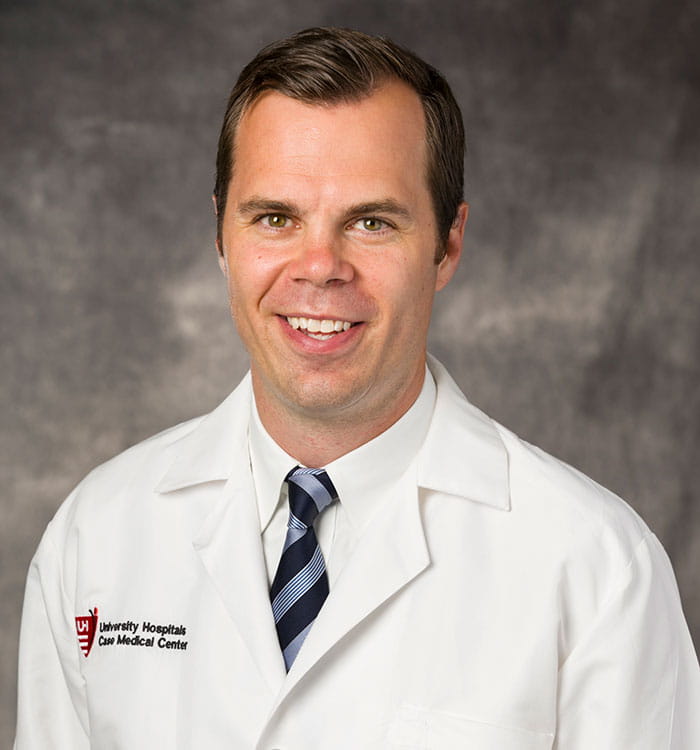Wearable Tech
January 13, 2016
UH leveraging data from devices to reduce sports injury risk
Innovations in Orthopaedics - Winter 2016 Download PDF
 James Voos, MD
James Voos, MDFrom an orthopaedic surgeon’s view, the goal of wearable technology is to improve people’s health and longevity, whether they’re just starting an exercise program, recovering from an injury or maximizing their performance. “We’re looking for ways to help people both start and extend their athletic lives,” says James Voos, MD, Chief of the Division of Sports Medicine, Jack and Mary Herrick Endowed Director of Sports Medicine and Head Team Physician for the Cleveland Browns.
Already, wearable technology enables real-time monitoring of physiologic and movement parameters, allowing researchers to calculate everything from workloads of particular joints and muscle groups to rates of biomechanical fatigue. Now, Dr. Voos and his colleagues have put all that information together in studying the practice sessions of the Cleveland Browns: “This is the first time that we’ve been able to calculate the work loads and physical demands that an athlete faces on a day-to-day basis,” Dr. Voos says.
Having calculated such values, Dr. Voos’s team is now studying the predictive power of the data to help reduce the risk of injury. “So if we see that a player had, say, a hamstring injury,” Dr. Voos says, “we’re looking for anything in the data that’s outside of that player’s normal values that could have predicted the injury.” This information can be used in future monitoring of the athlete in efforts to reduce the risk of injury or aid an athlete recovering from injury in a safe return to play.
“Overuse injuries are the biggest problem for our high school athletes,” says Dr. Voos, “so if we can utilize this technology to help prevent or reduce the risk of overuse injuries, we can allow more athletes to stay active and injury free.” While the wearable sensors used by professional teams can be expensive and complex, the cost of personal wearable technology devices and ease of use continue to improve, allowing for amateur teams and weekend warriors to benefit. “That’s what I’m particularly excited about,” says Dr. Voos, “and we’re collaborating with device makers and software engineers to improve the technology in order to find increasing applications in sports medicine.”
The Division of Sports Medicine at University Hospitals is uniquely positioned to forge such partnerships because of the existing relationships with athletes at every level. “We take care of a large number of youth and high school teams, as well as college and professional teams,” says Dr. Voos, “all of which are interested in this research. So we’re able to test these devices safely on a large number of athletes.” In addition, Dr. Voos says the department is committed to further develop its expertise and research on wearable technology: “We have developed a comprehensive team that is poised to serve as the content experts to develop and analyze data from these devices,” he says.
Very soon, whether on a weight-loss program, recovering from a hip fracture or just supplementing a healthy lifestyle with regular exercise, it’s likely that people will be able to further benefit from the wearable technology that they already own. That’s because coupling the forthcoming results from the Cleveland Browns study with data from consumer-level technology already on the market should improve the public’s ability to start, monitor and improve their exercise programs safely. “The most frustrating thing that happens for a person motivated to exercise is getting hurt,” says Dr. Voos. “If we can use these devices – from pedometers to heart-rate monitors – to help people exercise safely, that’s a great outcome from this technology.”
You can contact Dr. Voos at James.Voos@UHhospitals.org.
Article updated January 2017
Tags:


